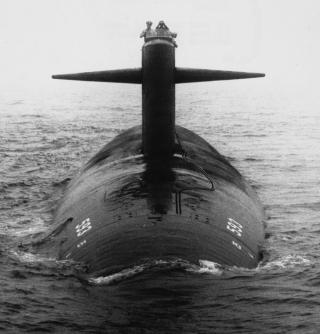On 10 April 1963, a tragedy occurred that haunts the U.S. Navy to this day. While conducting deep-dive tests, the new, highly touted USS Thresher (SSN-593) sank with all 129 on board. It was the first nuclear submarine ever lost at sea. One reason the fate of the Thresher continues to haunt us to the degree that it does is that the cause of the disaster has yet to be unequivocally determined. Without that, there is no sense of closure, and the mystery endures.
Our cover story this issue commemorates the 60th anniversary of the loss of the Thresher—and offers a compelling case for a possible solution. Norman Polmar, author of the book The Death of the Thresher, provides a thorough, blow-by-blow account of the events leading up to the catastrophe and analyzes the available evidence to get at the “why” of the Thresher’s demise.
Fast-forwarding to more recent history, it may be hard to believe, but it was 20 years ago this March that the invasion of Iraq, Operation Iraqi Freedom, commenced. Chip Reid, an NBC News correspondent, was embedded with the storied 3d Battalion, 5th Marines (of Belleau Wood, Guadalcanal, Peleliu, Okinawa, Inchon, and Chosin fame) as they advanced on Baghdad. Here is a gripping frontline account of the Marines of 3/5 as they battled back a fierce ambush five days after crossing the border.
Also in this issue, we are pleased to present the Second Prize winner in the 2022 CNO Naval History Essay Contest. Andrew K. Blackley examines the doomed efforts of the American-British-Dutch-Australian (ABDA) Command to halt the rapid Japanese advance into the Southwest Pacific in late 1941–early 1942, and from it all derives “An Object Lesson on Allied Inoperability.” Considering the locale of the short-lived ABDA Command’s woes, it is a feature that should resonate for those who keep a weather eye on the current geopolitical situation.
The Philippines, of course, fell in the face of the Japanese onslaught that ABDA failed to halt, and not everybody was able to get out of there in time. One of them was a U.S. Navy nurse, Lieutenant Margaret Nash, who was stationed at Cavite when the bombs rained down. She would spend the remainder of the war a captive of the Japanese, and through it all, she continued to provide medical treatment to those around her while stoically suffering the deprivations of internment. (She weighed 78 pounds at the time of her liberation.) William Galvani relates the inspiring story of this indefatigable Bronze Star recipient.
British researcher Karen May, meanwhile, recounts the final, fatal expedition of Royal Navy Captain R. F. Scott, aka Scott of the Antarctic, in 1911–12. It is a remarkable tale of endurance, sacrifice, betrayal, and the ultimate example of leaving no man behind—whatever the cost.
Lastly, the Naval War College’s Captain Sam J. Tangredi, who is researching a history of naval operations during the Crusades, sets his sights on the legendary Knights Templar. Captain Tangredi cuts through the layers of conspiracy theory and conjecture surrounding the mystique-shrouded Templars to get to the reality of their naval operations, from commerce raiding to siegecraft to shore assault. Prepare yourself for a most intriguing glimpse into the medieval maritime world.
Eric Mills
Editor-in-Chief







